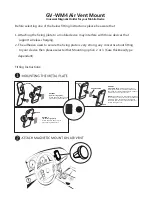
Data, settings, and web service messages
Your device can receive many kinds of messages that
contain data, such as business cards, ringing tones,
operator logos, calendar entries, and e-mail notifications.
You may also receive settings from your service provider
in a configuration message.
To save the data from the message, select
Options
and the
corresponding option.
Web service messages are notifications (for example,
news headlines) and may contain a text message or a link.
For availability and subscription, contact your service
provider.
Mailbox
Define e-mail settings
Select
Menu
>
Messaging
and
Mailbox
.
To use e-mail, you must have defined a valid internet
access point (IAP) in the device and have defined your e-
mail settings correctly.
You must have a separate e-mail account. Follow the
instructions given by your remote mailbox and internet
service provider (ISP).
If you select
Messaging
>
Mailbox
and have not set up
your e-mail account, you are prompted to do so. To start
creating the e-mail settings with the mailbox guide, select
Start
.
When you create a new mailbox, the name you give to the
mailbox replaces Mailbox in the Messaging main view. You
can have up to six mailboxes.
Open the mailbox
Select
Menu
>
Messaging
and a mailbox.
When you open the mailbox, the device asks if you want
to connect to the mailbox.
To connect to your mailbox and retrieve new e-mail
headers or messages, select
Yes
. When you view messages
online, you are continuously connected to a remote
mailbox using a data connection.
To view previously retrieved e-mail messages offline,
select
No
.
To create a new e-mail message, select
Options
>
Create
message
>
.
When you are online, to end the data connection to the
remote mailbox, select
Options
>
Disconnect
Retrieve e-mail messages
Select
Menu
>
Messaging
and a mailbox.
If you are offline, select
Options
>
Connect
to open a
connection to the remote mailbox.
60
Messaging
















































